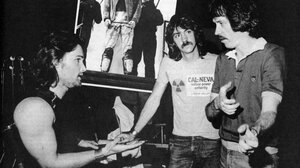John Carpenter (1976-1982)

John Carpenter’s early career stands as one of the most significant runs in genre filmmaking. During this period, Carpenter demonstrated a masterful ability to create iconic films that transcend their budgets, blending suspense, action, and horror with a distinctive style. Known for his economical storytelling, atmospheric tension, and self-composed scores, Carpenter established himself as a filmmaker with a singular vision. While his films are rightly celebrated for their craftsmanship and influence, not all were initially appreciated by critics or audiences, and his penchant for slow pacing and minimalist dialogue occasionally left viewers divided.
Assault on Precinct 13 (1976) Carpenter’s first fully realized feature, Assault on Precinct 13, fuses the stripped-down tension of Howard Hawks with the nihilism of 1970s urban cinema. Made on a shoestring budget, the film follows a motley group of cops, criminals, and civilians trapped inside a decommissioned police station under siege from a faceless street gang. Carpenter’s taut direction, pulsating synth score, and deliberate pacing turn the minimalist premise into a masterclass in suspense. Unfolding almost in real time, the film abandons psychological realism for elemental conflict, with violence erupting without warning or resolution. Though modest in scale, Assault on Precinct 13 remains one of Carpenter’s most rigorously designed works, a parable of isolation and solidarity that set the blueprint for his future explorations of dread, enclosure, and moral ambiguity.
Halloween (1978) Carpenter’s breakthrough film, Halloween, is one of the most influential horror films ever made, defining the slasher genre for decades to come. With its deceptively simple premise—a masked killer, Michael Myers, terrorizing babysitters in a small Midwestern town—the film capitalized on Carpenter’s ability to create suspense through minimalist techniques. The use of long tracking shots, naturalistic lighting, and Carpenter’s chilling piano-based score create a relentless tension that elevates Halloween above its exploitation-film trappings. Jamie Lee Curtis’s performance as Laurie Strode brings a vulnerable yet resourceful presence to the film, while Donald Pleasence’s turn as Dr. Loomis adds gravitas. Despite being made for just $325,000, Halloween grossed over $70 million worldwide, making it one of the most profitable independent films ever. Critics at the time were divided, with some dismissing it as a violent thriller lacking substance. In hindsight, the simplicity of Halloween is its greatest strength—a masterclass in lean, atmospheric filmmaking that became the template for countless imitators, none of which match its primal effectiveness.
The Fog (1980) With The Fog, Carpenter pivoted from the slasher format to craft a supernatural ghost story steeped in atmosphere. Set in the coastal town of Antonio Bay, the film explores themes of revenge and historical guilt as the ghosts of leprous sailors return to exact vengeance on the town’s descendants. Carpenter’s direction emphasizes mood over gore, employing mist-shrouded cinematography, eerie soundscapes, and his signature synthesizer score to create an oppressive sense of unease. While The Fog boasts old-fashioned storytelling, atmospheric visuals, and a strong ensemble cast including Adrienne Barbeau, Jamie Lee Curtis, and Janet Leigh, its pacing can be slow, and its scares underwhelming compared to Halloween. Over time, The Fog has gained a cult following, with audiences appreciating its craftsmanship and the subtlety of its horror. Although it does not reach the heights of Carpenter’s best work, it remains a solid entry in his filmography.
Escape from New York (1981) Carpenter’s Escape from New York is a dystopian action film that epitomizes the director’s ability to do more with less. Set in a near-future where Manhattan has been converted into a maximum-security prison, the film follows anti-hero Snake Plissken (played with grizzled charisma by Kurt Russell) as he infiltrates the city to rescue the President of the United States. The premise is pulpy, and Carpenter imbues with a gritty, almost mythic quality. The film’s low-budget production is evident in its simple sets and sparse visual effects, but is compensated with inventive world-building, dynamic cinematography, and a moody synth score. Russell’s portrayal of Snake Plissken became iconic, embodying a cynical anti-establishment ethos that resonated with audiences. The storytelling may be thin and episodic, but its influence on later dystopian and cyberpunk media is undeniable and its combination of style, attitude, and world-building makes it a cult classic.
The Thing (1982) Arguably Carpenter’s masterpiece, The Thing is a tense, claustrophobic horror film that pushes paranoia and practical effects to their limits. A remake of The Thing from Another World (1951), Carpenter’s version focuses on a group of researchers in Antarctica who encounter an alien capable of imitating any living organism. The story’s setup is simple, but Carpenter’s execution is anything but. Rob Bottin’s groundbreaking special effects are a cornerstone of the film’s legacy, delivering grotesque, unforgettable visuals that remain unmatched in their visceral impact. Kurt Russell’s performance as the rugged, pragmatic MacReady anchors the film, while Ennio Morricone’s minimalist score enhances its sense of isolation and dread. Upon release, The Thing was panned by critics and underperformed at the box office, overshadowed by the feel-good optimism of E.T. However, it has since been reevaluated as one of the greatest horror films ever made, lauded for its technical brilliance, tension, and philosophical exploration of trust and survival.
Overall Appraisal From 1976 to 1982, John Carpenter established himself as one of the most innovative and influential genre filmmakers of his time. Each film showcases his ability to craft tension, atmosphere, and memorable visuals, often on limited budgets. Halloween and The Thing stand as towering achievements, while Assault on Precinct 13, The Fog, and Escape from New York highlight his versatility and commitment to exploring different facets of horror and action. Carpenter’s minimalist style, reliance on practical effects, and use of music as a narrative tool set him apart from his peers, balancing his slower pacing and sometimes sparse character development. Despite uneven reception during this period, the reappraisal of his work underscores his enduring influence on cinema. Carpenter’s legacy lies not only in his films but in the way he reshaped the language of suspense, horror, and science fiction for generations to come.
